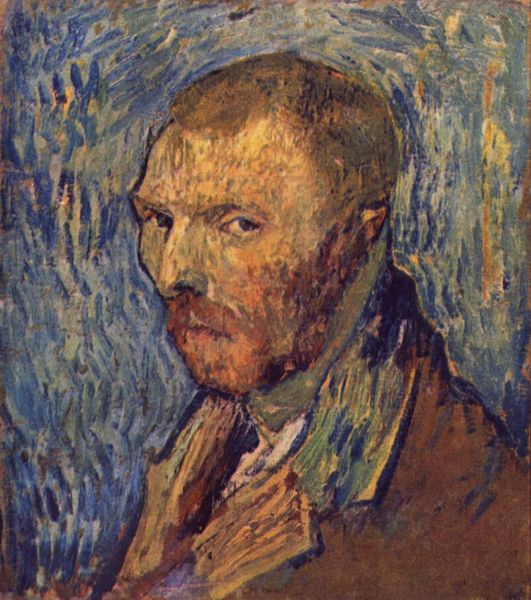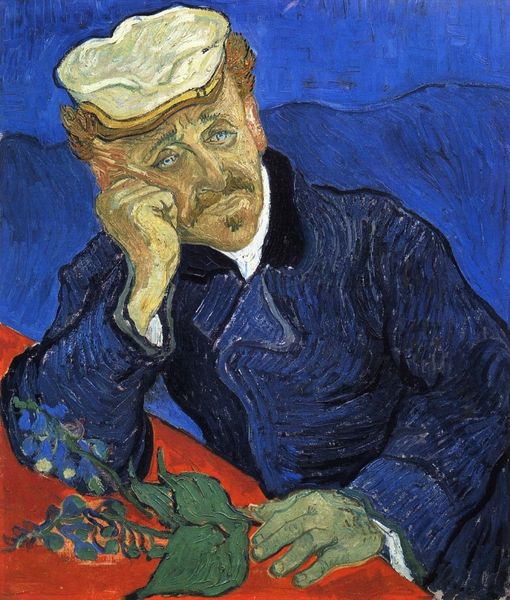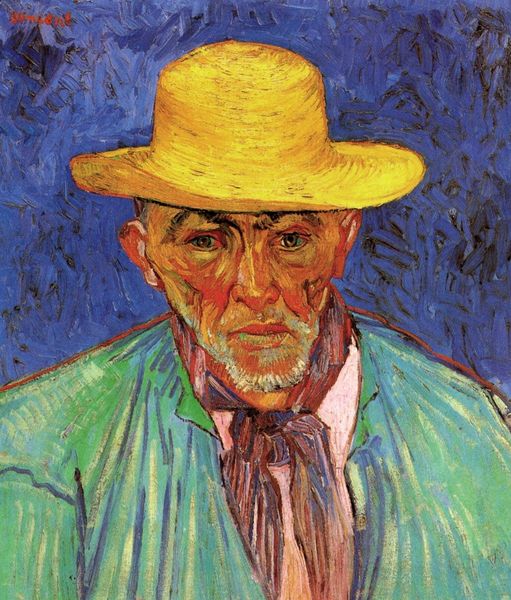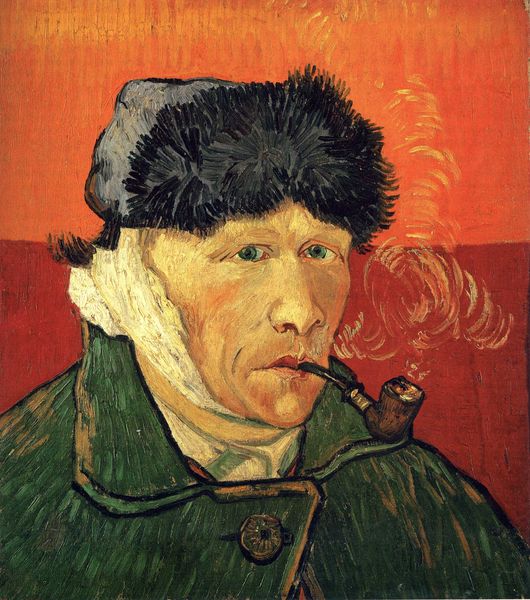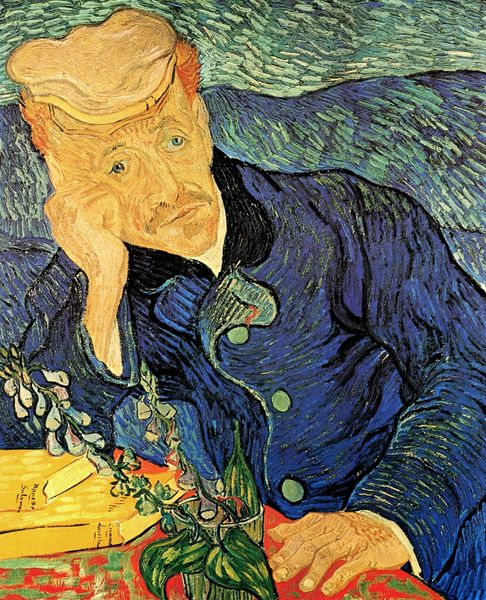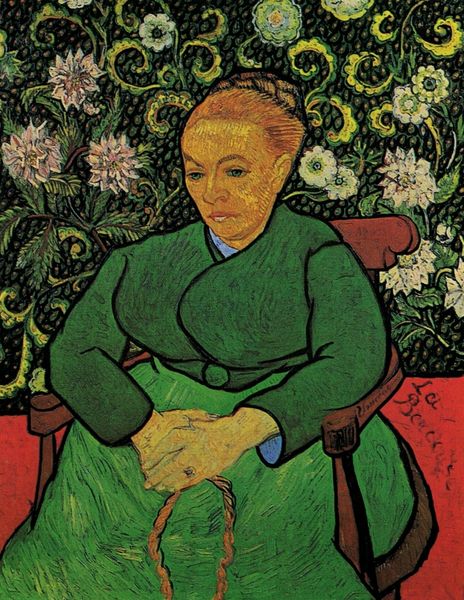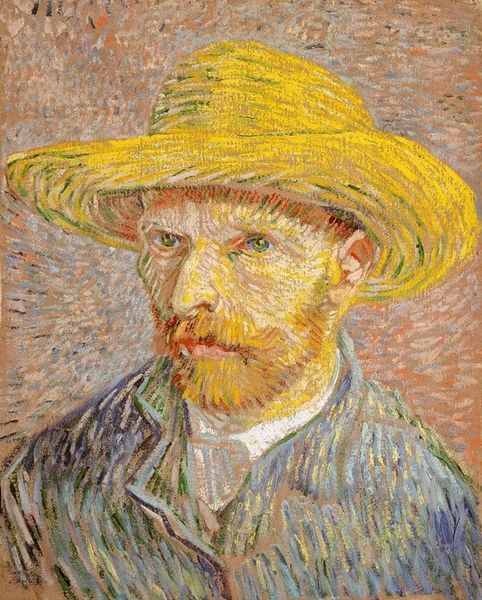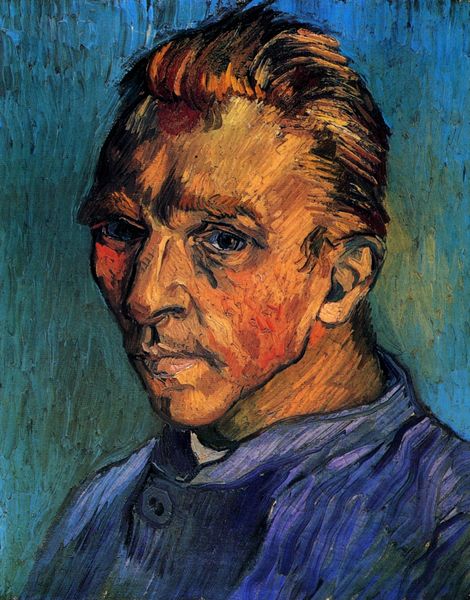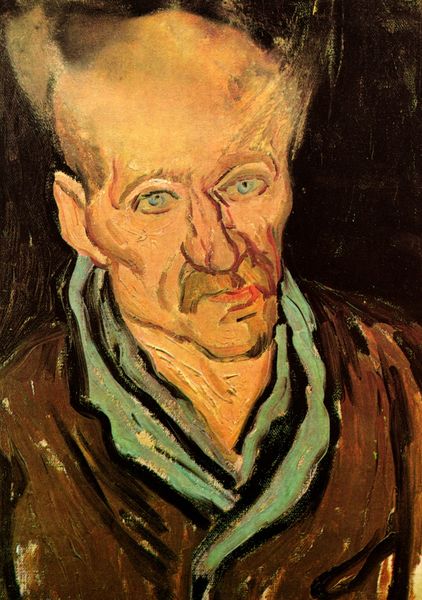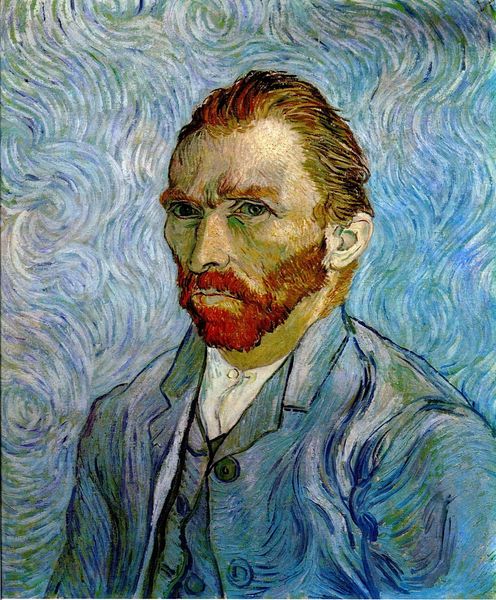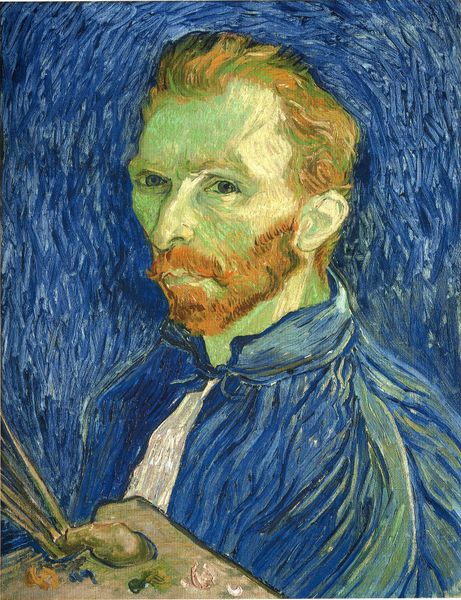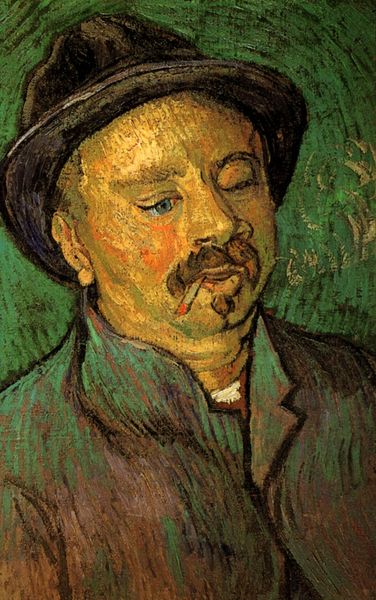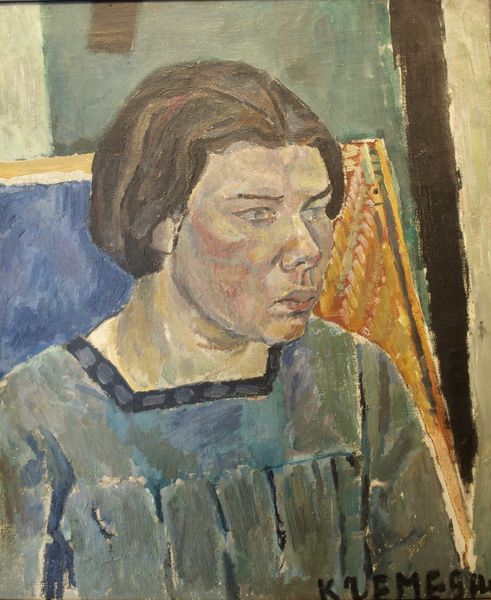
oil-paint, impasto
#
portrait
#
self-portrait
#
oil-paint
#
oil painting
#
impasto
#
famous-people
#
male-portraits
#
post-impressionism
#
modernism
Dimensions: 60.5 x 50 cm
Copyright: Public domain
Curator: We're standing before Vincent van Gogh's "Self-Portrait with Bandaged Ear," created in 1889. The work resides here at the Courtauld Institute of Art in London, rendered in oil paint. Editor: It’s unsettling. The first thing I notice is the stark white bandage juxtaposed against the swirling blues and greens. There's a definite rawness and vulnerability in his gaze. Curator: Absolutely. The bandaged ear itself becomes a powerful symbol, an emblem of trauma. But let's also consider the cultural context. This portrait was painted shortly after the infamous incident in Arles, amidst Van Gogh's struggles with mental health and institutionalization. Editor: And the Japanese print in the background? What does that tell us? Curator: The presence of the Japanese print connects Van Gogh with the Japonisme movement that was popular in Europe. The inclusion of such items from Ukiyo-e art references reflect both commercial taste, and artistic interest. Editor: But, going back to the bandage – the symbolism is just inescapable. He’s presenting an image of suffering, of a self quite literally in pieces. It almost feels performative, though that word feels crude. It really captures Van Gogh as a martyr of modern art. Curator: The bandage, yes, it undeniably signifies suffering, and serves as a potent signifier within a developing mythology surrounding the artist. The brushstrokes create textures that seem to vibrate. But Van Gogh's time in asylums was also part of a larger institutional framework that determined who was considered sane or insane and which practices might have led him to this situation in the first place. It allows us to contemplate who gets labeled mad by a society and what is at stake in making those classifications. Editor: Interesting point. Regardless, the work endures. It speaks volumes about the link between art, identity, and perhaps the most universal theme: pain. Curator: Indeed. It forces us to look not only at the artist, but at the system that surrounds and perhaps consumes him. The picture becomes an uncomfortable commentary on an artist made more and more mythical over the passage of time.
Comments
artera over 1 year ago
⋮
Few artists have recorded the trials and tribulations of their own life as graphically as Vincent van Gogh (1853-90). In the last five years of his life, he produced more than forty self-portraits. This one, as the bandage confirms, was painted shortly after his breakdown. In 1888, Vincent moved to Arles, in the south of France, and invited Paul Gauguin to join him. He was full of enthusiasm at the time, hoping that, together, they might form the nucleus of a new artistic colony. Unfortunately, Gauguin's arrogance and Van Gogh's fragile mental state proved a disastrous combination and, two days before Christmas, a crisis occurred. Vincent produced a razor and Gauguin fled. Left alone and in despair, the Dutchman then proceeded to slice off his left earlobe and send it to a local prostitute. Van Gogh recuperated in a hospital until the following month, when he was deemed well enough to return home. At this stage, the artist painted two striking self-portraits, showing the extent of his injury. Van Gogh's main intention was to reassure his brother:" ... believe that the portrait can tell you better than a letter how things are going with me." It is probably significant that Van Gogh chose to include a Japanese print of Mount Fuji in the background. He was passionately fond of these colorful Asian images, which exerted a strong influence on his own style, and wanted to show that his optimism was returning. "I envy the panese the extreme clarity... f their work, he once srote They do a figure in a few surestkes, with the Same ease... as buttoning your coat."
Join the conversation
Join millions of artists and users on Artera today and experience the ultimate creative platform.
